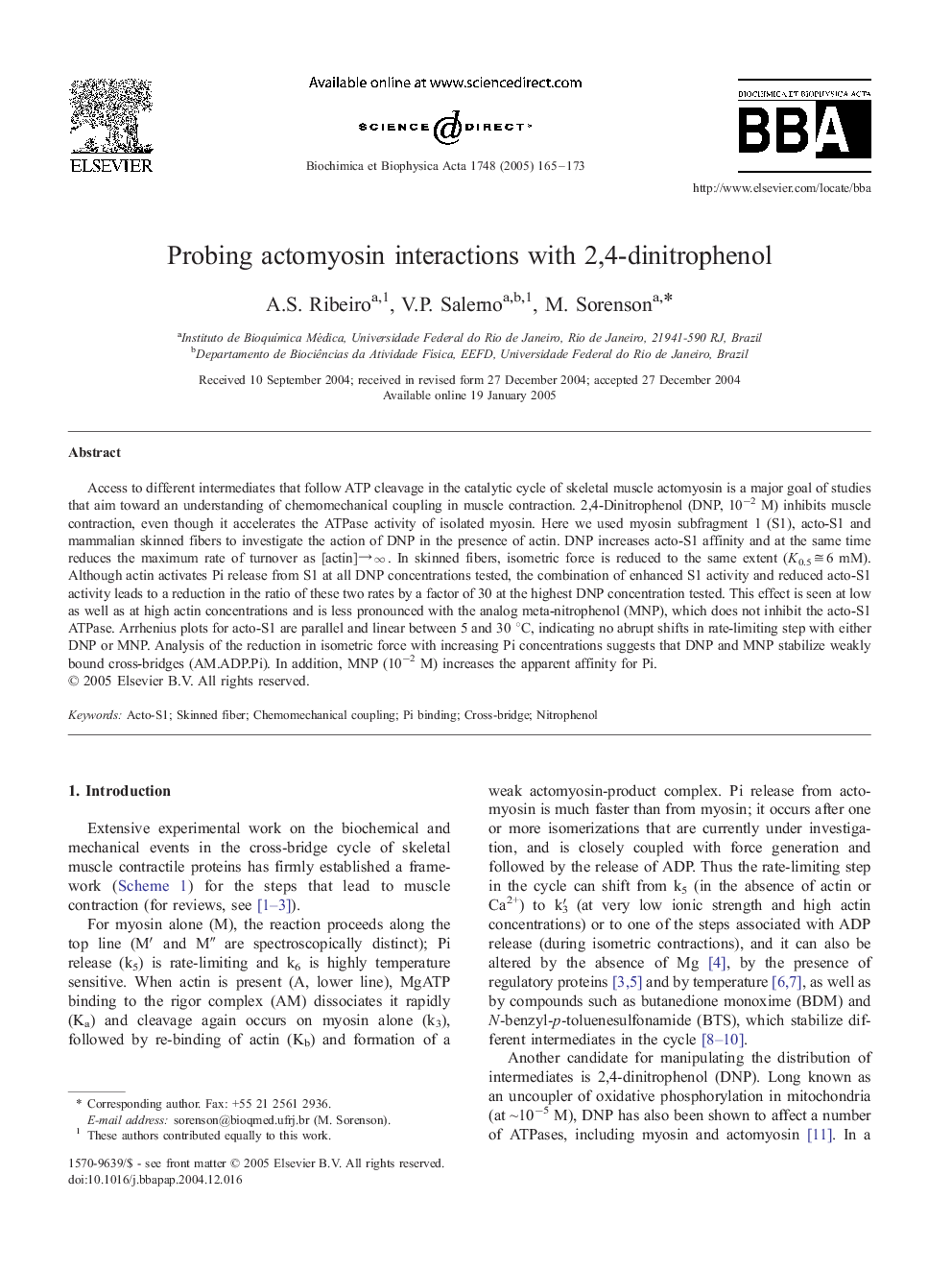| Article ID | Journal | Published Year | Pages | File Type |
|---|---|---|---|---|
| 10537344 | Biochimica et Biophysica Acta (BBA) - Proteins and Proteomics | 2005 | 9 Pages |
Abstract
Access to different intermediates that follow ATP cleavage in the catalytic cycle of skeletal muscle actomyosin is a major goal of studies that aim toward an understanding of chemomechanical coupling in muscle contraction. 2,4-Dinitrophenol (DNP, 10â2 M) inhibits muscle contraction, even though it accelerates the ATPase activity of isolated myosin. Here we used myosin subfragment 1 (S1), acto-S1 and mammalian skinned fibers to investigate the action of DNP in the presence of actin. DNP increases acto-S1 affinity and at the same time reduces the maximum rate of turnover as [actin]ââ. In skinned fibers, isometric force is reduced to the same extent (K0.5â
6 mM). Although actin activates Pi release from S1 at all DNP concentrations tested, the combination of enhanced S1 activity and reduced acto-S1 activity leads to a reduction in the ratio of these two rates by a factor of 30 at the highest DNP concentration tested. This effect is seen at low as well as at high actin concentrations and is less pronounced with the analog meta-nitrophenol (MNP), which does not inhibit the acto-S1 ATPase. Arrhenius plots for acto-S1 are parallel and linear between 5 and 30 °C, indicating no abrupt shifts in rate-limiting step with either DNP or MNP. Analysis of the reduction in isometric force with increasing Pi concentrations suggests that DNP and MNP stabilize weakly bound cross-bridges (AM.ADP.Pi). In addition, MNP (10â2 M) increases the apparent affinity for Pi.
Related Topics
Physical Sciences and Engineering
Chemistry
Analytical Chemistry
Authors
A.S. Ribeiro, V.P. Salerno, M. Sorenson,
